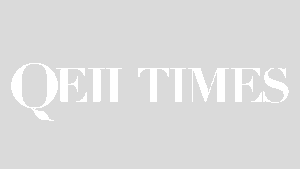Fresh air and exercise isn’t usually how Dr. Drew Bethune fights cancer. But the combination proved extremely effective at last fall’s
Dr. Bethune, QEII thoracic surgeon and medical lead of the provincial cancer care program, along with hundreds of other cyclists, took to their bikes in October after raising funds to support life-saving cancer research and to fund an endobronchial ultrasound (EBUS) — a minimally invasive diagnostic procedure for lymphoma, lung cancer and other lung diseases — for the QEII Health Sciences Centre. The event was hosted in partnership by the QEII Foundation and The Leukemia and Lymphoma Society of Canada, and powered by BMO Bank of Montreal.
“It was a really amazing experience —it was up to 100 kilometres on the trails and 130 kilometres on the road,” he says. “It was a very positive environment. A lot of people were very excited about raising money for cancer.”
More than 300 people rode in the second-annual event. The fundraising side was “fantastic,” with riders bringing in $411,000 (net).
“By helping bring EBUS to the QEII," Dr. Bethune says, "our riders are giving patients a more comfortable and safe journey to face their cancer diagnosis head-on.”
The device helps doctors diagnose enlarged lymph nodes in the chest and is safer and less invasive for patients.
Staff are already trained on the device and Dr. Bethune expects to have it up and running in early 2017. “Patients will notice quite a difference. Usually we make an incision in the neck and have to do a lot of manoeuvring to biopsy the lymph nodes,” he says. “There’s less risk for patients with this procedure, and less pain.”
It will also mean about 100 people a year don’t need to use the operating room, which will save costly operating time for other procedures.
Dr. Aneil Mujoomdar, a QEII thoracic surgeon who will be using the EBUS machine, echoes Dr. Bethune's excitement.
“Not only is it a minimally invasive approach,” he says. “People will experience a better recovery because they won’t need an incision or anesthetic.”
Dr. Mujoomdar notes that current research says EBUS should be the first option and surgeries the second. The EBUS carries an ultrasound into the chest so the physician can look for the lymph nodes, watch the attached needle go in to take a sample, and withdraw it.
That can determine the diagnosis and what stage the cancer is at. “Doing that will hopefully help detect people who wouldn’t be helped by surgery and the proper treatment plan for them,” he says.
In Atlantic Canada, more than 15,000 individuals are diagnosed with cancer each year. Participants in the second-annual event included many cancer survivors and those currently, or riding in support of those, battling the disease.
“If Tristan can fight cancer, I knew I could ride 50 kilometres,” says Trudy with enthusiasm.
Dr. Bethune is already looking forward to the third annual
“It’s inspiring to see how the average person out there is so moved to come and raise money for cancer. It touches everybody. It inspires me to try and make things as good as possible within the powers that I have,” he says.
To learn how you can participate in the 2017








